求助
meriunkat
2018年04月02日

Please help identify this succulent💚
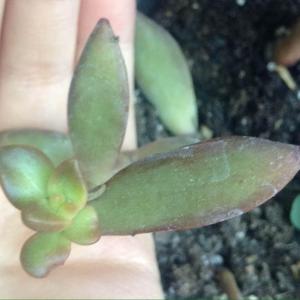
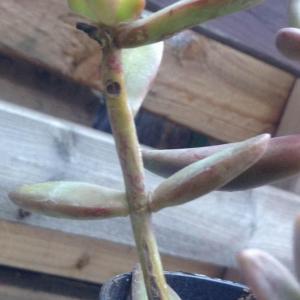


0
0
Catarina ZS:Sedum nusbaumerianum
meriunkat:@shirly mei very close, I looked it up and found apparently it's called sedum firestorm but it is family with Adolphi thanks😆
shirly mei:golden sedum?
softwpeach
2018年03月23日

WHAT IS HAPPENING TO THEM??? HELP ME PLEASE#help #succulent
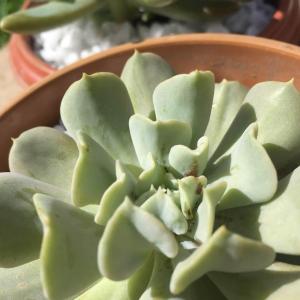
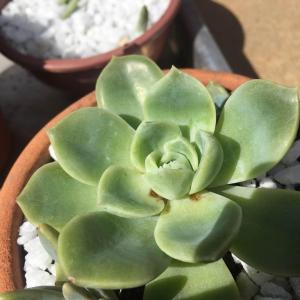


2
0
meriunkat:It's called edema, brown corky spots caused by waterlogged soil. Succulents are cacti, therefore they perform best when their soil dries between waterings.
sunnyzou:Spots grow when pests crawl or bite
sunnyzou:There are notches in the leaves and there are black or green stool-like small particles nearby. It must be a bug. Look carefully.
文章
Miss Chen
2018年03月21日

Gardeners often place matchsticks in the soil beneath green peppers (Capsicum annuum Grossum Group) when setting them out to feed those plants' love of sulfur. Because peppers prefer a pH between 6.0 and 6.8, the acidifying chemical does help provide optimum conditions for them, so their use isn't just an old wives' tale. The number of matches recommended varies from two or three per plant to an entire book (20) per plant. If you have other uses for matches, you can add a small amount of garden sulfur to each planting hole instead.
Await Warmth
Peppers must have warm conditions to thrive, so don't set them out until after the last spring frost. Wait until the soil temperature is 65 degrees Fahrenheit and nighttime temperatures have climbed above 55 degrees F., daytime ones above 70 degrees F.

Harden Seedlings
If you started pepper plants indoors, begin taking them outdoors for a few hours every day. Set them in the shade at first, and gradually extend their outdoor time while moving them into more sun.
Prepare Holes
Plant peppers in full sun, in fertile, well-drained soil. First, make a 6-inch-deep hole, partially filling that excavation with 2 inches of compost and about 1/2 cup of 5-10-10 organic fertilizer. Work those amendments into the bottom of the hole with a trowel.
Add Matchsticks
After removing the cover from a book of matches, place the matches atop the just-worked soil. If you prefer to use garden sulfur instead, add 1 teaspoon of it. To avoid shocking the seedling, cover the matches or sulfur with 1 to 2 additional inches of soil so the amendments don't come in direct contact with the plant until it is well-established. You then can set a pepper in the hole, loosening its roots if they have become matted together, and positioning the plant slightly deeper than it grew in its container.

After filling in the soil around its roots, pat the soil down and water it well. If you wish to set out more than one pepper, space the plants 18 inches apart and their rows 24 inches apart.
Water Plants
Keep the peppers' soil damp while they are becoming established, providing them with at least 1 inch of water per week, via rain or irrigation. To help maintain their soil's moisture and discourage weeds, mulch the plants with up to 2 inches of a light organic material such as straw or shredded dead leaves.
Await Warmth
Peppers must have warm conditions to thrive, so don't set them out until after the last spring frost. Wait until the soil temperature is 65 degrees Fahrenheit and nighttime temperatures have climbed above 55 degrees F., daytime ones above 70 degrees F.

Harden Seedlings
If you started pepper plants indoors, begin taking them outdoors for a few hours every day. Set them in the shade at first, and gradually extend their outdoor time while moving them into more sun.
Prepare Holes
Plant peppers in full sun, in fertile, well-drained soil. First, make a 6-inch-deep hole, partially filling that excavation with 2 inches of compost and about 1/2 cup of 5-10-10 organic fertilizer. Work those amendments into the bottom of the hole with a trowel.
Add Matchsticks
After removing the cover from a book of matches, place the matches atop the just-worked soil. If you prefer to use garden sulfur instead, add 1 teaspoon of it. To avoid shocking the seedling, cover the matches or sulfur with 1 to 2 additional inches of soil so the amendments don't come in direct contact with the plant until it is well-established. You then can set a pepper in the hole, loosening its roots if they have become matted together, and positioning the plant slightly deeper than it grew in its container.

After filling in the soil around its roots, pat the soil down and water it well. If you wish to set out more than one pepper, space the plants 18 inches apart and their rows 24 inches apart.
Water Plants
Keep the peppers' soil damp while they are becoming established, providing them with at least 1 inch of water per week, via rain or irrigation. To help maintain their soil's moisture and discourage weeds, mulch the plants with up to 2 inches of a light organic material such as straw or shredded dead leaves.
1
0
成长记
cclecombe
2018年03月14日

My string of pearls is looking really sad 😩 Any idea what i can do to help it? I water it ince a month, is this not enough


0
0
求助
Nishu Priya
2018年03月07日

Can't identify this plant. Help?
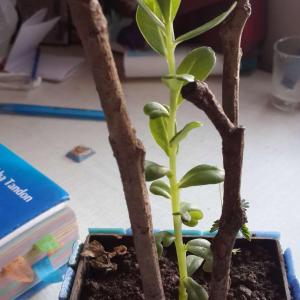

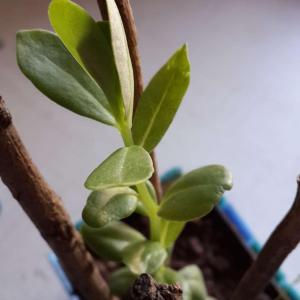



0
0
爱峰:I guess this is the Large flowered purslane.
求助
Jessica Vaughn
2018年02月22日
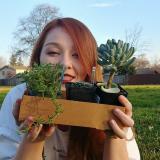
please help! this drosanthemum floribundum is dying and I can't find anything online on how to help it. I don't iverwater it and it's drought proof! Please help it's got green growing ends but the rest is dry and hard!
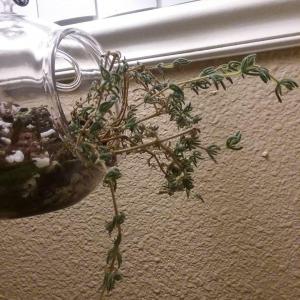

0
0
成长记
Avacha
2018年02月01日

For a fortnight Gamora’s being observed by Xiaomi Flower Care device. With the help of this small gadget I see when it’s time to water the plant and understand if it gets enough light. The device also measures levels of temperature and fertility of the soil, but I suppose the first index is not so important, and the second one is not measured accurately - so the need of fertilization I plan to determine intuitively 😉


1
0
求助
Katrina
2018年01月20日

Can someone help me please?!?! I just separated and repoted my senecio vitalis because two of them in one pot was too crowded. Now, they are both turning purple. The one in the photo did sustain minor injuries during repotting, but the other one is turning purple as well. They are placed next to a window, it is winter, and the stem side facing the window has the most coloring. Could it be too much sun, or too cold? Thanks!
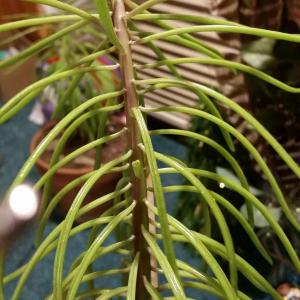

0
0
☆MintyHorizons☆:Don't worry, plants-especially succulents-usually turn shades of purple or red in the winter. Some even drop a few leaves or even get a bit smaller. I would keep the watering schedule the same, and try to have the plants in a room-temp environment. Plus, after repotting, it takes a while for the plant to adjust anyway.
求助
Krystayn
2018年01月20日

I'm wondering if anyone out there can help me with identifying this plant? I was able to propagate it via leaf cutting. It's almost one year old and it hasn't done much else than develop roots. I did have three pieces that took, but recently two died. The mother plant was a mass of this foliage. I don't believe it flowers and I'm pretty sure I was told indirect sunlight. I don't want to lose this piece. I hope someone is familiar with this plant, because I'd love to get it growing and enjoy its beauty. Thanks.


0
0
求助
BeautifullyMad
2018年01月17日

A bunch of my succulents have stems. I read in an article that they arent supposed to have stems. Am i doing something to cause them to have stems? Please help. 😊
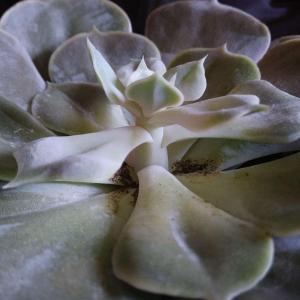
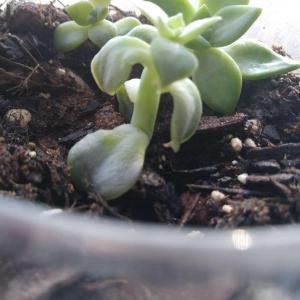




1
0
stunning.succulents:I bought a light meter for fairly cheap - it's become a very useful tool for determining if my plants have the right amount of light they need - highly recommend & good luck!
meriunkat:Not necessarily having a stem because that is where the leaves are attached to anyway, but the fact that there isn't enough sunlight the plant stretches turning weak and pale loosing it's beautiful colors in search of the sun
meriunkat:It's called etiolation, not enough sun
funfuntoday:They're growing tall because they aren't getting enough light, they're reaching. Try moving then to a sunnier spot














